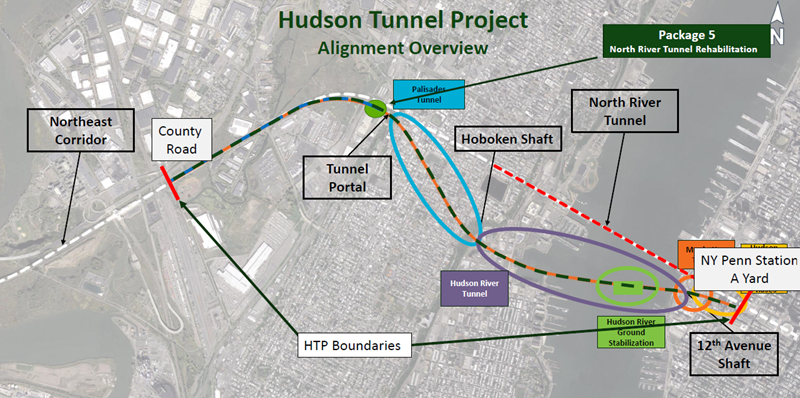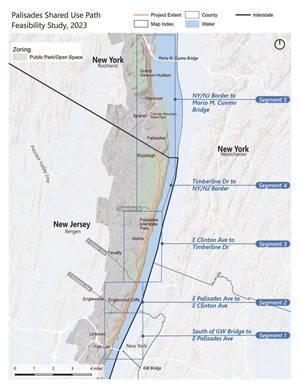
Progress on the new Hudson River tunnel, a study of a new multiuse path along the west side of the river and work on climate action plans were topics of presentations at the annual meeting of the
Metropolitan Area Planning (MAP) Forum on December 1. The NJTPA hosted the meeting of the MAP Forum, a consortium of 10 metropolitan planning organizations and councils of government in Connecticut, New Jersey, New York, and Pennsylvania.
Paola Cala-Ortiz, policy advisor to
Gateway Development Commission (GDC), presented an update on the Gateway Program, which includes a new two-track Hudson River tunnel and other rail improvements between New York Penn Station and Newark Penn Station. It is the most congested section of the 457-mile stretch of the Northeast Corridor (NEC) from Boston to Washington, D.C., she said. Some 450 trains and 200,000 trips daily are constrained by a two-track bottleneck at the existing Hudson River tunnel. “The Northeast Corridor is really an economic engine for the whole of the country,” Cala-Ortiz said. It encompasses 7 million jobs within 5 miles along its length.
The bistate, single-purpose GDC is developing the $16-billion project through a partnership among New Jersey, New York, and Amtrak to realize “resiliency, reliability, and redundancy” in the rail corridor, said Carla-Ortiz.
Phase 1 involves construction of a new two-track tunnel under the Hudson River along with rehabilitation of the existing two-track North River Tunnel, which is more than a century old. It will also include completion of a concrete casing on the west side of Manhattan to preserve the right-of-way for the tunnel into Penn Station and a new bridge on Tonnelle Avenue in New Jersey over the tunnel portal.
Meanwhile, NJ TRANSIT will replace the
century-old Portal North Bridge, a two-track moveable swing-span bridge, with a higher bridge that will not have to open and close for traffic along the Hackensack River.
The Hudson Tunnel Project has received or had approved up to $11 billion in federal funding, a 70/30 funding split between the federal government and local partners, according to Cala-Ortiz.
Two other presentations during the meeting focused on bicycle and pedestrian access to the George Washington Bridge (GWB).
Jay Shuffield, manager of regional transportation policy at the Port Authority of New York and New Jersey, reviewed bicycle and pedestrian improvements at the GWB, including rest areas, viewing platforms, entry platforms, and ramps replacing stairs.

The
New York Metropolitan Transportation Council (NYMTC)
is studying creating a 20-mile shared use path along the
west bank of the Hudson River to accommodate increased bicycle traffic from the recent improvements to the GWB and a shared used path across the Mario Cuomo Bridge, formerly the Tappan Zee.
U.S. Route 9W has always been a significant bike route despite not having sufficient facilities for cyclists, said John Simpson, mobility coordinator at NYMTC. Many use the route to get from the GWB through parks on the west side of the Hudson as far north as Bear Mountain State Park.
The study is anticipated to be completed in winter 2025. Community workshops are being planned for the coming months, followed by public review of the draft report expected next fall. It will determine the feasibility of a path and a potential preferred alignment. That would set the stage for later construction and implementation, Simpson said.
NYMTC and the NJTPA are also partnering on the creation of a
Priority Climate Action Plan. This effort is being spearheaded by the New York City Mayor’s Office of Climate and Environmental Justice, with funding from the federal Environmental Protection Agency.
This is one of four such efforts underway in the MAP Forum Region, with three others in Connecticut and one in Eastern Pennsylvania. The plans include greenhouse gas inventories and enable the region to seek funding to implement reduction measures.
A complete recording of the MAP Forum annual meeting
is available here.